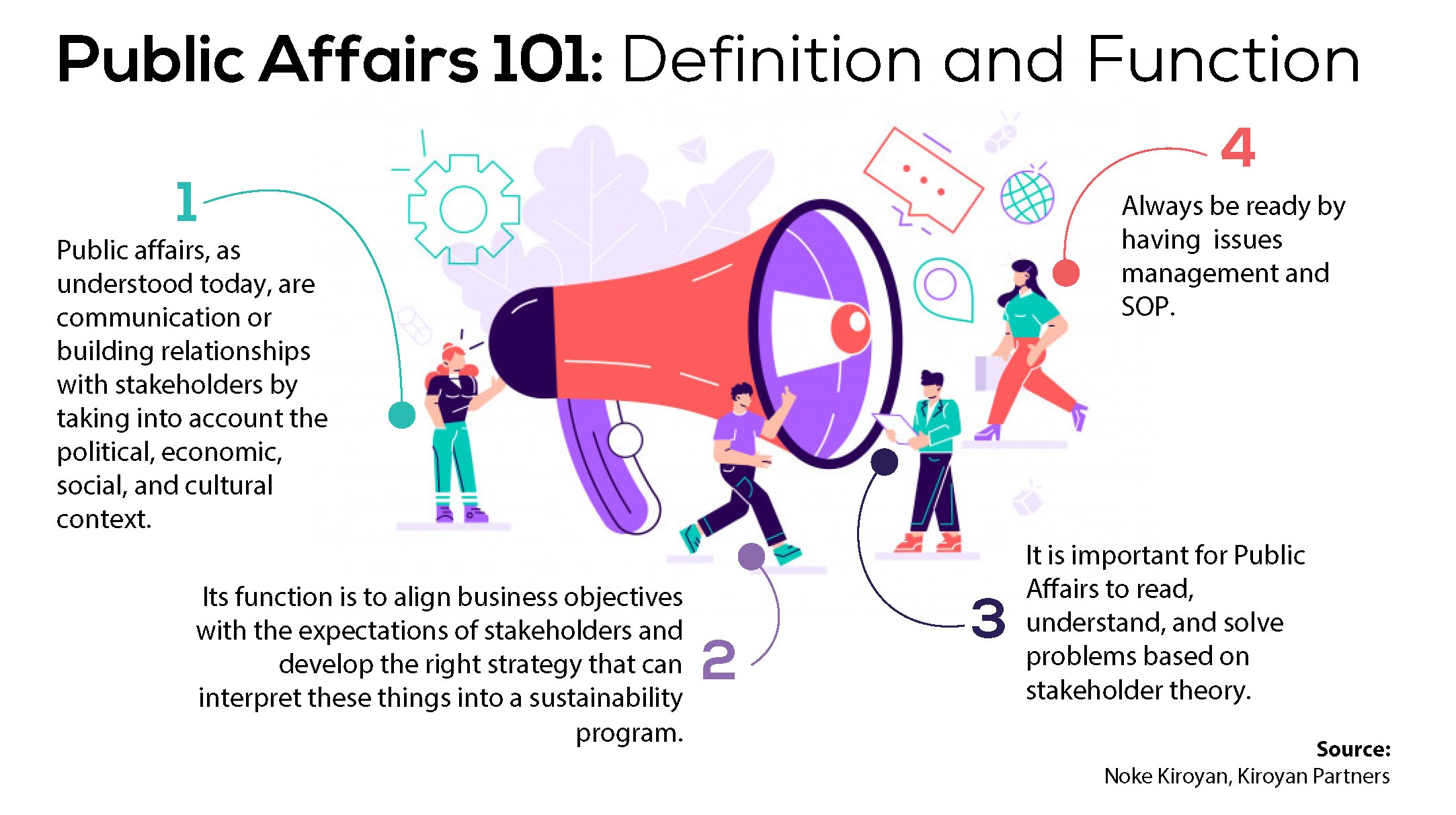
“Public affairs that we understand now are communicating or establishing relationships with stakeholders by taking into account the political, economic, social, cultural context,” said Noke.
Photo: Roni/PR Indonesia
There are still many questions milling about public affairs. What is public affairs starting from? the difference with public relations, to its connection with government relations. Noke straightened it out here.
According to Noke Kiroyan, Chairman and Chief Consultant of Kiroyan Partners, the question is natural. This is because public affairs (PA) is a relatively new specialty, especially in Indonesia. ” Along the way, there have been many changes in its meaning and function,” he said, as quoted from his book Public Affairs: Theory and Practice.
Based on the experience at Kiroyan Partners, Noke concluded that about 50 percent of activities between PA and public relations (PR) are the same. The difference is that PA concerns the public policy and legal framework regarding certain economic sectors. Thus, the actors need an understanding of the macro-political system and dynamics to make an analysis.
In practice, PA includes activities generally carried out by PR, such as media relations and event organizing. Meanwhile, quoted from Reputation Today magazine, April 20, 2019, Mahathi Parashuram, who heads the Public Affairs, Communications & Engagement function at multinational companies, said that apart from having good communication skills, PA practitioners must also have a good understanding of politics, issues relating to public policy, and the present (current affairs), the ability to organize, as well as to overcome crises.
Still, according to Mahathi, public affairs is a communication between an organization and all its stakeholders. The focus is on the intersection of politics, business, and society at large. Its function is to build long-term trust between the organizations represented and these stakeholders. “So, there is a close relationship between PA and PR. Although these two meanings are not the same and congruent,” Noke concluded.
Wider
Now, about its relation to government relations, Noke said, PA was not merely a matter of dynamics in relation to the government. “Public affairs that we understand now are communicating or building relationships with stakeholders by taking into account the political, economic, social, cultural context,” said the man who has experience serving as CEOs in various industries ranging from mining, oleochemicals, to energy and innovative technology.
Simply put, he continued, building communication or stakeholder engagement in the context of a particular culture. “So, PR is more about processes and techniques, while PA has a bigger context, because we have to understand all the conditions mentioned earlier,” he added.
Noke gave an example when a mining company planned to open a mining area. Public Affairs must conduct comprehensive and in-depth research/analysis, starting from the political, social, cultural, and economic conditions in the mining operations location.
After studying the needs of the community, what makes them need it, what they want from the company when it is already operating, and the impact on the company if it operates there, then public affairs can develop a stakeholder engagement strategy and communication strategy. “So, not only the communication process and the technique but also the context,” said Noke.
Therefore, it is important for PA practitioners to read, understand, and solve problems based on stakeholder theory. First of all, identify the stakeholders first, because every company has different stakeholders.
Likewise, each stakeholder has challenges, and their approach and handling also vary in each region. “The important thing is we are open and willing to listen. Don’t ever think that you are right and be selfish,” advised Noke.
Of course, in building communication with anyone, the first step that must be taken is to find common ground where we can build understanding. “After that, we can start to build it,” he added.
Issues Management
Another thing that the PA must pay attention to, like PR, is to always be ready. One of the keys to being ready is to have issues management and standard operating procedures (SOP). So, in the future, if something happens, we will not be confused because we already know what to do and are ready, because we already have a strategy to overcome it.
Noke also emphasized that PA practitioners should always work on the basis of facts, preceded by desktop research. “If necessary, we will follow up with research in the field,” he said firmly. Mitigation measures like this must be taken especially for companies engaged in the mining industry. This is because this industry is prone to issues, especially pollution and friction with affected communities.
Conversely, never spinning. For example, the company is in fact polluting, but we say the opposite. As an ethical company, we must also solve every problem in an ethical manner.
Looking at the fundamentals of PA’s function and role, it would be a big mistake if there were still companies that saw their existence as a burden. In fact, PA’s function is closely related to the sustainability of the company’s business. It plays a role in aligning business goals with the expectations of stakeholders, as well as developing the right strategy that can interpret these things into a sustainability program.
It is possible that the perception that PA is a burden is formed because the company does not have adequate knowledge, or does not even want to bother. Meanwhile, along with the growing demands of stakeholders, companies will be increasingly valued and then selected by their customers on the basis of how they demonstrate ethical and responsible business practices.***

This article has been published in PR Indonesia magazine 68th Edition, issued on November 2020, pages 8-9.
Download the clipping here.



